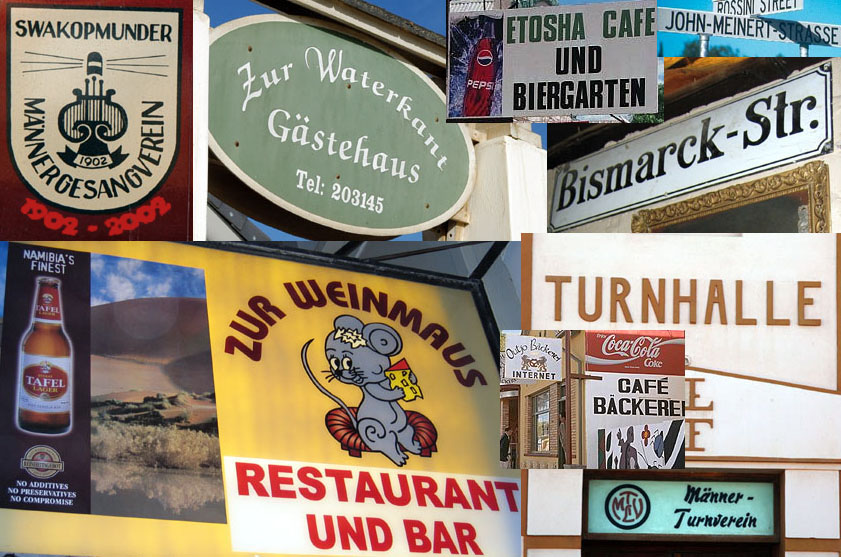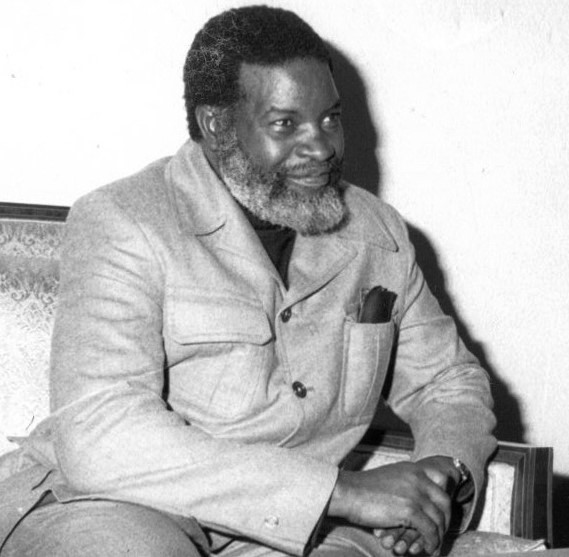|
Deutsche Höhere Privatschule Windhoek
The Deutsche Höhere Privatschule (DHPS) is a private school in Namibia and a . It is situated in the capital Windhoek. The DHPS is funded by the German Federal Government as well as by school fees. Scholars have the option of leaving with the Cambridge certificate, the common school-leaving certificate in Namibia, in grade 12, or doing the (DIA, The German International Abitur), also in grade 12. History The school was established in 1909 under the name Kaiserliche Realschule Windhuk (Windhoek Imperial Secondary School). Its name changed to ''Deutsche Realschule'' (German secondary school) upon the abdication of the German emperor Wilhelm II at the end of World War I. In 1926 the school introduced the Abitur and thus assumed the name ''Deutsche Oberrealschule'' (German senior secondary school). When the Abitur was replaced by the matric in 1941, the school was renamed ''Höhere Privatschule'' (lit. Higher private school), and it got its current name in 1958. Culture DHPS off ... [...More Info...] [...Related Items...] OR: [Wikipedia] [Google] [Baidu] |
Khomas Region
Khomas is one of the fourteen regions of Namibia. Its name refers to the Khomas Highland, a high plateau landscape that dominates this administrative subdivision. Khomas is centered on the capital city Windhoek and provides for this reason superior transportation infrastructure. It is located in the central highlands of the country and is bordered by the Erongo region to the west and the northwest and by the Otjozondjupa region to the north. To the east is the Omaheke region, while in the south is the Hardap region. The region is characterized by its hilly countrysize and many valleys. It has well-developed economical, financial, and trade sectors. Khomas Region occupies 4.5% of the land area of Namibia but has the highest population of any of its regions (16.2%). Khomas is one of only three Namibian regions to have neither shoreline nor a foreign border. Politics Khomas is important electorally, as it is by far the most populous of the Namibian regions. , it has 264,905 register ... [...More Info...] [...Related Items...] OR: [Wikipedia] [Google] [Baidu] |
Calle Schlettwein
Carl-Hermann Gustav "Calle" Schlettwein (born 13 June 1954) is a Namibian politician who has served in the country's cabinet from 2012 to 21 March 2025. In March 2020 to 21 March 2025 he was appointed the Minister of Agriculture, Water and Land Reform after serving as the Minister of Finance from 2015 to 2020 and previously as the Minister of Trade and Industry from 2012 to 2015. Early life Schlettwein is of German Namibian descent. He attended the Deutsche Höhere Privatschule Windhoek. Between 1974 and 1980 Schlettwein studied Entomology, Zoology and Botany at the University of Stellenbosch. Later he worked as researcher in the Department of Water Affairs. Career Beginning at Namibian Independence in 1990, Schlettwein served as permanent secretary in various ministries. After seven years of deployment in the Ministry of Finance, President Hifikepunye Pohamba appointed Schlettwein to the National Assembly as one of the six non-voting Members of Parliament appointed by ... [...More Info...] [...Related Items...] OR: [Wikipedia] [Google] [Baidu] |
Educational Institutions Established In 1909
Education is the transmission of knowledge and skills and the development of character traits. Formal education occurs within a structured institutional framework, such as public schools, following a curriculum. Non-formal education also follows a structured approach but occurs outside the formal schooling system, while informal education involves unstructured learning through daily experiences. Formal and non-formal education are categorized into levels, including early childhood education, primary education, secondary education, and tertiary education. Other classifications focus on teaching methods, such as teacher-centered and student-centered education, and on subjects, such as science education, language education, and physical education. Additionally, the term "education" can denote the mental states and qualities of educated individuals and the academic field studying educational phenomena. The precise definition of education is disputed, and there are disagreements ... [...More Info...] [...Related Items...] OR: [Wikipedia] [Google] [Baidu] |
Boarding Schools In Namibia
{{disambig ...
Boarding may refer to: *Boarding, used in the sense of "room and board", i.e. lodging and meals as in a: **Boarding house **Boarding school *Boarding (horses) (also known as a livery yard, livery stable, or boarding stable), is a stable where horse owners pay a weekly or monthly fee to keep their horse *Boarding (ice hockey), a penalty called when an offending player violently pushes or checks an opposing player into the boards of the hockey rink *Boarding (transport), transferring people onto a vehicle *Naval boarding, the forcible insertion of personnel onto a naval vessel *Waterboarding, a form of torture See also *Board (other) *Embarkment (other) Embarkation is the process of boarding or loading of a ship or aircraft. Embarkation, embarkment or embark may also refer to: * Embark (transit authority), the public transit authority of the Oklahoma City metropolitan area, Oklahoma, United State ... [...More Info...] [...Related Items...] OR: [Wikipedia] [Google] [Baidu] |
Schools In Windhoek
A school is the educational institution (and, in the case of in-person learning, the building) designed to provide learning environments for the teaching of students, usually under the direction of teachers. Most countries have systems of formal education, which is sometimes compulsory. In these systems, students progress through a series of schools that can be built and operated by both government and private organization. The names for these schools vary by country (discussed in the '' Regional terms'' section below) but generally include primary school for young children and secondary school for teenagers who have completed primary education. An institution where higher education is taught is commonly called a university college or university. In addition to these core schools, students in a given country may also attend schools before and after primary (elementary in the U.S.) and secondary (middle school in the U.S.) education. Kindergarten or preschool provide some sch ... [...More Info...] [...Related Items...] OR: [Wikipedia] [Google] [Baidu] |
Allgemeine Zeitung (Namibia)
The ''Allgemeine Zeitung'' (AZ, literally in English 'General Newspaper') founded in 1916, is the oldest daily newspaper in Namibia and the only German-language daily in Africa to survive World War I. Profile The ''Allgemeine Zeitung'' is a Namibian newspaper. It is written by 10 editors; most of the staff members are either born or naturalized Namibians. It is read mostly by German-speaking Namibians (~15,000). The newspaper leans liberal-conservative. The circulation of the ''AZ'' stood at about 5,000 copies (Mondays to Thursdays, 12 to 16 pages) to about 6,000 copies (Fridays, up to 32 pages) in the 2000s and 2010s. A few hundred papers are sent to South Africa and some (mostly the Friday release) to Namibian expatriates and to Germany. Once a month (usually on the first Tuesday of the month), an extra for tourists is added. The circulation then increased to about 12,000 copies. In line with the general decrease of newspaper readership in the 2010s, there are about 4,000 copi ... [...More Info...] [...Related Items...] OR: [Wikipedia] [Google] [Baidu] |
German Language In Namibia
Namibia is a multilingual country in which German is recognised as a national language. While English has been the sole official language of the country since 1990, in many areas of the country, German enjoys official status at a community level. A national variety of German is also known as Namdeutsch. German is especially widely used in central and southern Namibia and was until 1990 one of three official languages in what was then South West Africa, alongside Afrikaans and English, two other Germanic languages in Namibia. German is the mother tongue of German Namibians as well as older black speakers of Namibian Black German and Black Namibians who as children grew up in the German Democratic Republic (East Germany) during the last decades of the Cold War. The German Namibian newspaper '' Allgemeine Zeitung'' on its website refers to 22,000 native speakers and of several hundred thousand who know German as a second or third language. German benefits from its similarity to A ... [...More Info...] [...Related Items...] OR: [Wikipedia] [Google] [Baidu] |
Germany–Namibia Relations
Germany–Namibia relations are the bilateral relationship of Germany and Namibia. This relationship is of particular importance as Namibia was colonized and occupied by the German Empire in the 19th century. There is also a community of approximately 30,000 German Namibians residing in Namibia today. Both nations are members of the United Nations. Culturally, both countries are part of the Germanosphere. History Pre-colonial relations First contacts between people of the two countries took place when German missionaries were hired by the London Missionary Society to commence working in Southern Namibia during the late eighteenth century and early nineteenth century. German South West Africa and Herero and Nama genocide During the Scramble for Africa, while present-day Namibia was occupied by Germany and known as ''German South West Africa'', the United Kingdom occupied Walvis Bay and incorporated the port area to its possession in the Cape Colony. In 1890, the British governme ... [...More Info...] [...Related Items...] OR: [Wikipedia] [Google] [Baidu] |
Parliament Of Namibia
The Parliament of Namibia is the national legislature of Namibia. It is a bicameral legislature consists of two houses: the National Council of Namibia, National Council (upper house) and the National Assembly of Namibia, National Assembly (lower house). All Cabinet of Namibia, cabinet members are also members of the lower house. This situation has been criticised by Namibia's civil society and the opposition as creating a significant overlap between Executive (government), executive and legislature, undermining the separation of powers. The seniority of cabinet members generally relegates ordinary MPs to the back benches. From Independence of Namibia, Namibian independence until 2014 the National Assembly consisted of 78 members, 72 members elected by proportional representation and 6 members appointed by the president. The National Council of Namibia, National Council had 26 representatives of the Regional Councils, 2 from each of the then thirteen regions. Prior to the 2014 N ... [...More Info...] [...Related Items...] OR: [Wikipedia] [Google] [Baidu] |
Cabinet Of Namibia
The Cabinet of Namibia is an appointed body that was established by Chapter 6 (Articles 35-42) of the Constitution of Namibia. It is mandated to include: the President of Namibia, the Prime Minister of Namibia and any positions that the President so appoints. All cabinet members also sit in the National Assembly of Namibia, National Assembly. This situation has been criticised by Namibia's civil society and the opposition as creating a significant overlap between Executive (government), executive and legislature, undermining the separation of powers. Moreover, the seniority of cabinet members generally relegates ordinary MPs to the back benches. List of cabinets of Namibia Current Cabinet (2025-present) The new Cabinet was announced on 22 March 2025. This comes after the new President of Namibia, Netumbo Nandi-Ndaitwah, was inaugurated on 21 March 2025. *President of Namibia, President: Netumbo Nandi-Ndaitwah *Vice President of Namibia, Vice President: Lucia Witbooi *Prime M ... [...More Info...] [...Related Items...] OR: [Wikipedia] [Google] [Baidu] |
Independence Of Namibia
The South African Border War, also known as the Namibian War of Independence, and sometimes denoted in South Africa as the Angolan Bush War, was a largely asymmetric conflict that occurred in Namibia (then South West Africa), Zambia, and Angola from 26 August 1966 to 21 March 1990. It was fought between the South African Defence Force (SADF) and the People's Liberation Army of Namibia (PLAN), an armed wing of the South West African People's Organisation (SWAPO). The South African Border War was closely intertwined with the Angolan Civil War. Following several years of unsuccessful petitioning through the United Nations and the International Court of Justice for Namibian independence from South Africa, SWAPO formed the PLAN in 1962 with material assistance from the Soviet Union, China, and sympathetic African states such as Tanzania, Ghana, and Algeria. Fighting broke out between PLAN and the South African security forces in August 1966. Between 1975 and 1988, the SADF staged m ... [...More Info...] [...Related Items...] OR: [Wikipedia] [Google] [Baidu] |



